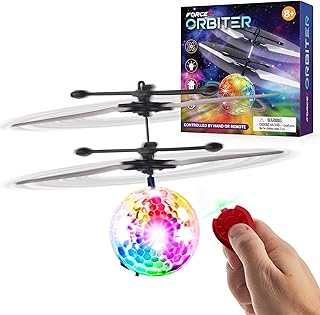Force1 Drone: The Future of Drone Technology?
The Force1 Drone, developed by the US military, is a powerful, multi-purpose platform that showcases impressive capabilities but is not necessarily the "future" of drone technology. Here's a breakdown:
What makes the Force1 Drone notable:
* Large Size and Payload: It's a significant step forward in size and payload compared to smaller drones, allowing for longer missions and a wider range of sensors and weapons.
* Advanced Autonomy: The Force1 Drone boasts advanced autonomy features, allowing for more independent operation and reducing the need for constant human intervention.
* Multi-Mission Capabilities: The drone can perform a variety of tasks, including surveillance, reconnaissance, communication relay, and even strike operations.
Why it may not be the "future" of drone technology:
* High Cost: Its size and complexity translate to a higher cost compared to smaller drones, potentially limiting widespread adoption.
* Logistics and Maintenance: Operating and maintaining such a large and sophisticated drone requires specialized personnel and infrastructure, increasing operational complexity and costs.
* Ethical Considerations: The Force1's strike capabilities raise ethical concerns about autonomous weapons systems and the potential for unintended consequences.
The Future of Drone Technology:
While the Force1 Drone represents an important step in drone technology, the future likely lies in the development of:
* More Affordable and Accessible Platforms: Small, affordable drones will continue to play a crucial role in various sectors, from agriculture and delivery to security and monitoring.
* Increased Autonomy and Intelligence: Advancements in AI and machine learning will lead to more sophisticated autonomous drones capable of performing complex tasks without human intervention.
* Improved Integration with Existing Systems: Drones will become increasingly integrated with other technologies, such as communication networks and data analytics platforms, enhancing their capabilities.
* Focus on Safety and Security: Regulations and technology will focus on addressing security risks associated with drones, including potential misuse and cyberattacks.
Conclusion:
The Force1 Drone is a remarkable technological achievement, showcasing the potential of large-scale, multi-purpose drones. However, it's unlikely to be the sole representation of the future of drone technology. Instead, the future will likely involve a diverse ecosystem of drones, each tailored to specific needs and applications.
It's crucial to consider the ethical and societal implications of these advancements to ensure that drone technology benefits humanity and is used responsibly.


